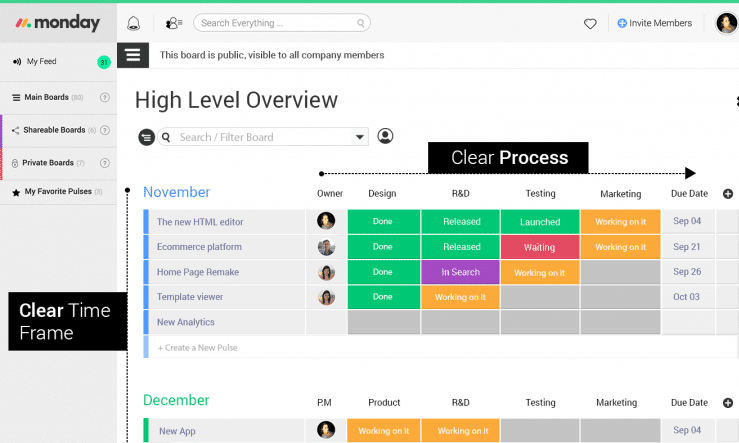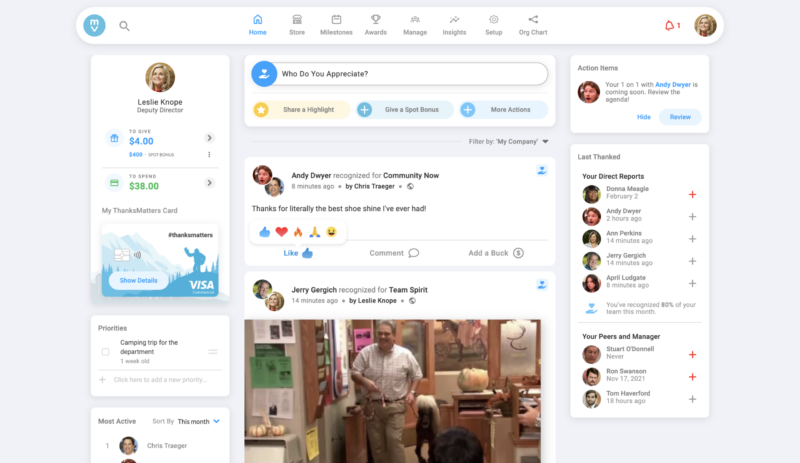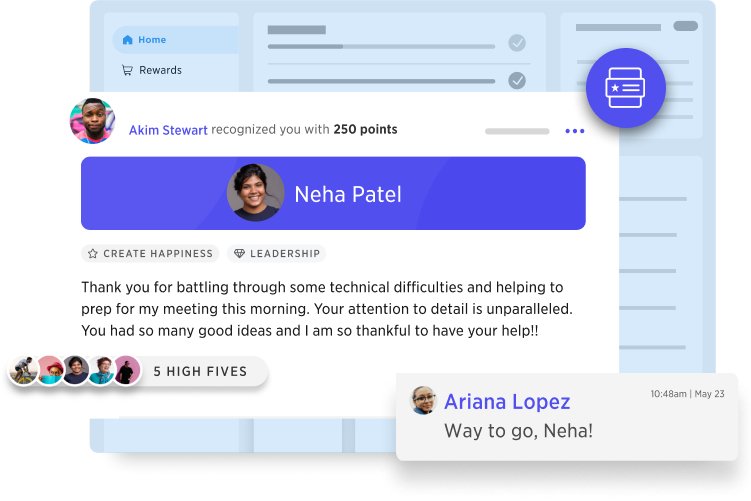The 8-hour workday dates all the way back to 1817 when the goal was “eight hours labor, eight hours recreation, eight hours rest.” Over hundreds of years, this schedule has been adopted by businesses and corporations of all sizes and has been considered “the norm” for centuries.
Our lives have been sliced into three segments since we accepted our first full-time job.
The expectation is that we’re optimally productive for our employers between the hours of ____ and _____, Monday through Friday. Wake up. Get ready. Go to work. BAM!
Productivity on command for eight (or more) straight hours.
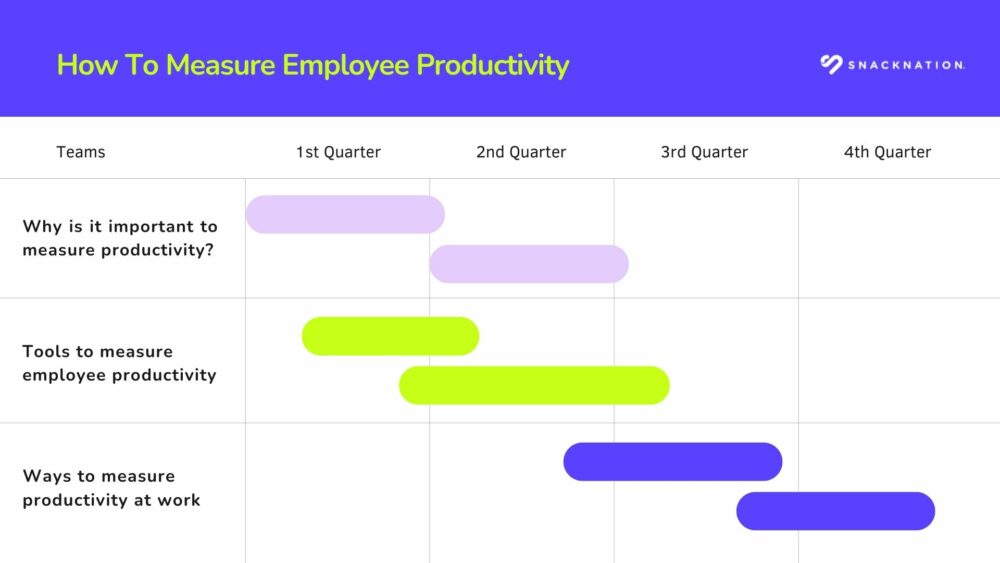
Considering the advancements in technology over the past 200 years, there’s little question as to whether we can be more productive in fewer hours.
Think about it. We now have access to countless remote work software options to scratch any itch to make work life easier.
When you know better, you can do better. It’s time you know just how productive your organization really is so that you can all do better moving forward.
Why is it important to measure employee productivity?
Measuring employee productivity is absolutely necessary for the growth of your employees, as well as your business. Without identifying an initial baseline, you have no direction for where to focus your energy and resources.
On the front end, your company’s continuous improvement efforts, process refinement, and software implementation decisions all stem from your employee productivity levels. On the back end, your profits, market share, and ROI can only grow by measuring, encouraging, and empowering a more efficient and effective workforce.
How To Measure Employee Productivity At Work
✅ Goal setting
The great thing about setting goals is that they can work as a funnel. When your employees achieve their individual goals, they are more likely to positively impact larger team goals. Those team goals then funnel into the overall company goals.
Studies show that when people understand the bigger picture and how they contribute, they feel more connected to the structure and the company’s success. There’s a deeper sense of commitment and responsibility to step up.
✅ Quantitative tasks
Quantifying tasks is a straightforward mathematical measurement. Determining the standard processing time of a task, then calculating how many times it can ideally be repeated in a set amount of time, sets the baseline. This could be applied to the number of calls they clear from the log each hour, how many emails they can respond to in a workday, or how many projects they can complete each week.
✅ Qualitative tasks
Quality-focused tasks add just as much value as those that are quantity-driven. Although these tend to be a bit more subjective, they’re vital to evaluating employee output. These performance factors may include how quickly they complete simple assignments.
How hard do they work based on your expectations and the job requirements? Are they task, process, deadline, or results-driven? And how can you capitalize on their approach to maximize productivity? The quality of your employees’ work directly impacts output and productivity measures.
✅ Profit/ROI
Your employees are an investment, and like a hot stock, good investments yield positive returns. Capturing key financial factors like how much new business they attract, how many contractual deals they secure, and how much money they make overall for the company can show you a clear ROI for each employee.
Tools To Measure Team Productivity
1) monday.com
A big element of being productive is not wasting time on menial tasks and manual processes. Monday.com lightens those loads by providing an all-in-one platform with management tools that save time and make your workforce more efficient.
How this tool helps to measure team productivity: You’ll be able to streamline your team’s daily functions and use the charting and measuring features to stay on top of everything, all from one dashboard.
Notable features:
➤ Gantt Charts — Metrics make the world go round. These user-friendly visuals give you a quick snapshot of your employees’ progress and planning capabilities.
➤ Automation — Save your employees valuable time by removing some of the manual steps they have to take to simply do their jobs.
➤ Workdocs to Workflows — What starts with taking a few notes can be turned into a process workflow in just a few clicks.
2) Motivosity
Your culture is the core of your organization’s success. Creating a work environment where employees are given clear direction and understand their purpose, motivates them to be more engaged in their work.
How this tool helps to measure team productivity: Deeper engagement and a purpose-driven culture are fuel for the productivity fire. Measuring employee engagement helps you know where to make adjustments.
Notable features:
➤ “Lead” — Developing your leadership team gives your workforce better managers to mentor and grow with.
➤ “Listen” — Gather effective employee feedback for productivity-boosting improvement ideas.
➤ Mobile App — Keep your Apple and Android-loving employees connected whether in the office, at home, or in an airport.
3) WorkTango
Gratitude is a social driver for advanced productivity levels. Increasing employee engagement also increases productivity. Feeling genuinely appreciated at work is both inspiring and motivating, and makes employees aware that their talents aren’t wasted.
How this tool helps to measure team productivity: Encouraging a culture of appreciation boosts productivity. Rewarding employees for their hard work and invaluable skills directly affects how dedicated and effective they are in their roles.
Notable features:
➤ Global Reach — Easily reward your remote team members in the same zip code or across 85 countries worldwide.
➤ Custom Curations — Design rewards catalogs for your workforce, with customized gift options to fit their milestones and your budget.
➤ Cultural Visibility — Keep your finger on the pulse of your organizational culture with an HR tool with built-in visuals and rewards tracking.
11 Sure-Fire Ways To Measure Employee Productivity At Work
1 Set basic standards for each role

Defining each role in your organization creates clear expectations. This also allows you to design effective workflows and show everyone why their roles are important. When people understand how their contributions affect the bigger picture, their path to success also becomes clearer.
Why this strategy helps to measure team productivity: Setting the standards makes it easier to build and maintain momentum. That momentum is called productivity.
2 Set weekly goals
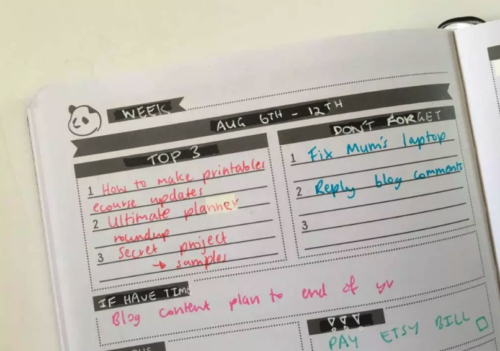
Short-term goals are all the little wins that feed into the BIG ones. Achievable goals with short deadlines keep your employees engaged and always aiming toward a clear target. Adding a recognition element to your goal achievement can help sweeten the deal even more.
Why this strategy helps to measure team productivity: Weekly goals can be easily measured and give you a great snapshot of your employees’ engagement at the base level.
Tip! You can set up a weekly goal template with a resource like monday.com that can maintain your goals and help each member of your team stay on track during a busy work week!
3 Set monthly or quarterly goals

To achieve these goals, employees may need to develop some new healthy work habits or double down on their personal development. These longer-term objectives feed into the annual targets and help employees make great strides in their progress while crushing their short-term goals.
Why this strategy helps to measure team productivity: With monthly or quarterly goal-setting and monitoring, your employees have a clear understanding of how their performance incrementally affects the team and the organization.
4 Review the quality of work
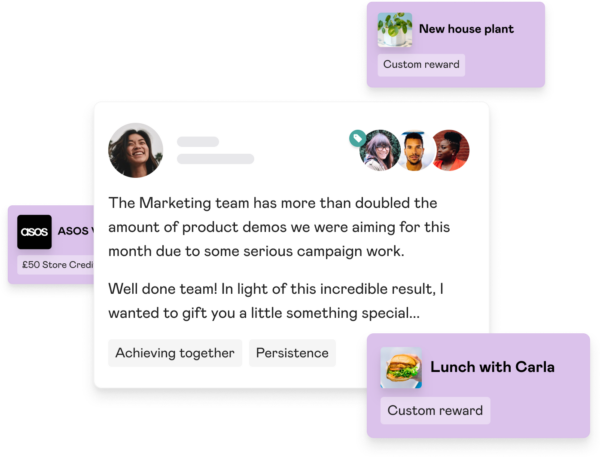
Courtesy of Mo Work
Getting work done doesn’t mean it’s done well. Poor quality workmanship costs your company time and money. Having to repeatedly review, revisit, and redo completed tasks sucks massive time from your productivity bank. Tightening up on the quality of work coming from your team will increase the quantity of work they’ll be able to complete.
Why this strategy helps to measure team productivity: Time is money, and business is not the place to waste either. Ensuring you have good, quality processes in place makes employees more effective and efficient in their roles and improves the overall company productivity.
Plus, you can reinforce high-quality work with a recognition platform like Mo Work that incentivizes managers to reward peers whenever it is deserved. Click here for a free trial 👈!
5 Send out a survey to learn more about employee roadblocks

Surveys are a great way to gather feedback from the masses. Some employees just aren’t comfortable speaking up, and fear dissension when they do. Making your surveys anonymous could make employees more comfortable sharing their truths, and allow you to collect more authentic feedback.
Why this strategy helps to measure team productivity: When you know what’s in your employees’ way, you can clear future obstructions that block their workflow. Grabbing these snapshots sets the baseline and establishes a consistent monitoring process.
Tip! You can use an employee survey tool to help manage survey questions, responses, and additional information you might want to learn about measuring employee productivity on your team.
6 Review your employee wellness program and how it may help in terms of productivity

An effective wellness program improves employee performance and productivity by improving the company culture and decreasing presenteeism. Yep… it’s a thing. When people come to work but don’t do much work, so they’re present but ineffective. Is it a poor work ethic? Is it burnout? Are their workloads unbalanced? Supporting employee well-being helps get a handle on unproductive and unbudgeted expenses.
Why this strategy helps to measure team productivity: While presenteeism isn’t likely tracked by your HR team or company’s analytics, you’ll clearly notice the lack thereof when you see productivity on the rise.
7 Meet with your staff directly to learn more about their projects

There’s nothing like some one-on-one time with the team. Sure, you can use all the collaboration tools available to you, but meeting with your crew directly and taking time to listen specifically to them, may be the boost they need. What resources do they need to help their process? Where are they struggling? How can you help? Meeting with them can ensure your team feels comfortable and can excel in a positive work environment.
Why this strategy helps to measure team productivity: Employees need to feel heard. A little time with the boss can do wonders for their confidence and direction.
8 Review their use of your productivity tools

You implement productivity tools to make work easier. But when employees don’t use them, you’re wasting your software investment, and they’re wasting time going the long way around, over and over again. Reviewing your toolbox lets you highlight all the features your team should be using, and reminds them of how they could be working smarter.
Why this strategy helps to measure team productivity: You already have the tools in your toolbox! You can’t say they don’t work if they’re not being used to their fullest extent.
Our favorite productivity tools to consider:
- Bonusly – free culture building and employee appreciation
- monday.com – team collaboration and productivity
- Caroo – employee care and appreciation packages
- Awardco – digital spending cards for employee
9 Daily touchpoints
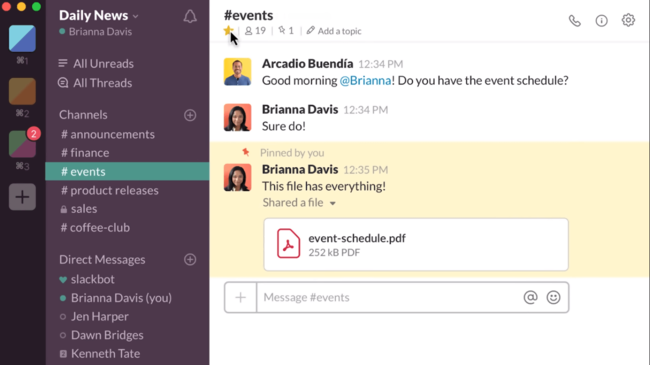
Setting aside 15-30 minutes each day to go over high-level touch points with your employees keeps everything they’re working on at the forefront. You don’t even have to be face-to-face. Optimize everyone’s time by using your collaboration tools like Slack or Zoom. This lets you evaluate their habits, time management, work ethic, and performance while keeping you in the know. No balls to drop!
Why this strategy helps to measure team productivity: Procrastination is a productivity plague. Daily touchpoints add an element of accountability and keep everyone’s sites set on the moving targets.
10 Look at employee absenteeism

Unlike presenteeism, employee absenteeism is monitored and monetized. Are they taking more “mental health” days? Are they still handling their work deadlines and responsibilities when they take off? Can you see where more unplanned personal time off may have been recorded just before previous employees left your organization? Paying attention to any influxes in personal time and patterns of unscheduled time off can help diagnose the root cause.
Why this strategy helps to measure team productivity: If your employees are looking for reasons not to show up, their productivity is definitely taking a hit. Get ahead of the problem by paying attention to the patterns and addressing your employees’ reasons before you lose valuable people and time.
11 End-of-Year Review
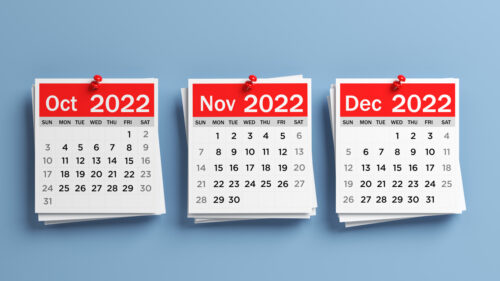
Which goals did they crush? Which ones did they fall a little short on? In addition to incremental reviews throughout the year to monitor their shorter-term goals, an end-of-year review is a chance to discuss the entire previous year’s struggles and successes with each employee. It’s also a great opportunity to highlight their professional growth and expectations for moving into the next year.
Why this strategy helps to measure team productivity: A lot can happen in a year! Setting these benchmarks with your employees annually identifies a clear path of growth and opportunities for advancement.
Conclusion
At the end of the day, productivity is ultimately measured by deliverables, not necessarily in increments of hours, minutes, and seconds. Sure, they’re still mathematically necessary, as we all know that “time is money.”
But in this new age of work, we’re recognizing that not every employee can simply flip their productivity switch and be “on” when directed.
Many companies have now implemented tracking software to monitor employee activity, especially when working offsite. While these trackers can help identify gaps in their processes and optimize idle time, there’s also a downside.
Employees surveyed reported spending an average of 5.5 hours per week in “productivity theater.” This is where they may be working on something that requires their focus but have to continuously bump their mouse or update their status so they appear “active” to their employers. Basically, they’re acting like they’re digitally busy to justify their time, even though they’re genuinely being productive.
Stop wasting money on idle time!
People Also Ask These Questions About Ways To Measure Employee Productivity
Q: Are there formulas I can use to measure employee productivity?
- A: You can use a productivity formula such as output/input = productivity to measure employee productivity.
Q: What are the benefits of measuring staff productivity?
- A: Some of the benefits of measuring staff productivity are deeper employee engagement, lower turnover rates, and higher profits.
Q: What are team productivity indicators?
- A: Team productivity indicators are measurements collected to show just how productive employees are. Examples may be the number of tasks completed in a given time, or the progress of a project compared to the planning efforts.
Q: Are there tools you can use to measure employee productivity?
- A: Some tools you can use to measure employee productivity are surveys, ongoing productivity metrics, and various project management tools.
Q: How is worker productivity measured?
- A: Worker productivity is measured by the amount of time invested compared to the value of work completed in said time.
Q: How to calculate the productivity of an employee?
- A: To calculate the productivity of an employee, you’ll need to set benchmarks for a starting point. From there, divide the total output by the total input for a basic calculation.
Q: How do I measure team productivity at my company?
- A: You can measure team productivity at your company by implementing time-tracking software, keeping your finger on the pulse of your culture, and collecting quality feedback to create metrics for visual monitoring.

